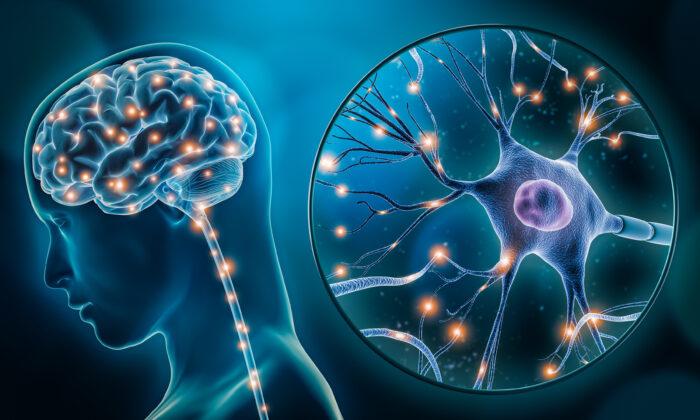Many men accept as fact the idea that testosterone will inevitably decrease as they get older. However, new science is showing that diseases of lifestyle, rather than just age, are often the real culprits behind the decline.
Testosterone levels have shown a stunning downward trend in the past several decades. The standard American diet is a nutritional wasteland. Environmental pollution and microplastics are wreaking havoc on our hormone levels with their endocrine-disrupting chemicals. Obesity, many drugs, and our sedentary lifestyle also undermine testosterone production. When so many aspects of our way of life can potentially sabotage testosterone levels—and by extension, good health—it becomes fundamental to a man’s well-being to understand how to preserve and boost levels of this vital hormone.
How Testosterone Works
Testosterone is the primary sex hormone that governs men’s health. It has direct effects on muscle growth, the production of red blood cells in the bone marrow, reproductive function, and behavior.However, Kalayjian explained that he considers a healthy range to be between 500 and 700.
Decline of Testosterone
In a study published in The Journal of Clinical Endocrinology & Metabolism in 2007, researchers followed a group of 1,532 American men aged 45 to 79 over nearly two decades to determine if there was an age-independent decline in testosterone in the male population. In other words, they wanted to compare if a 65-year-old man in 1987 had the same level of testosterone as similar men of the same age in 2004. They collected baseline data from 1987 to 1989 and conducted two follow-up periods in 1995–97 and 2002–04.They found an average decline of about 1 percent per year. For a hypothetical 65-year-old man in 1987 contrasted with a similar 65-year-old in 2004, that amounts to an approximately 17 percent decline.
Both studies attempted to control for factors such as comorbidities, diet, and lifestyle. Overall, the science is still unclear as to what accounts for this stark decrease over time, but there’s some speculation. The 2007 study explored the idea of environmental toxicity potentially contributing to the decline. The 2020 study showed an association between higher body mass index (BMI) and lower testosterone levels, noting that BMI increased in the men over time as well.
On an individual level, symptoms of testosterone deficiency can include low sex drive, loss of energy, brain fog, osteoporosis, the inability to gain muscle mass, and depression. To ultimately diagnose low testosterone, Kalayjian advocates for considering both measured testosterone levels and clinical symptoms.
Turning Back the Clock
Despite the population-wide trend, men can opt out of being a statistical point in the modern downward trajectory.In his medical practice, which is staffed by three health coaches, two personal trainers, and one mental health counselor, Kalayjian said he’s seen testosterone levels—and overall well-being—jump up in men who make key lifestyle changes in diet, exercise levels, and sleep.
“They’re going back to normal, and they feel like a fountain of youth. Their sex life is back. They’re able to put on muscle. It’s a big deal,” he said.
Kalayjian highlighted that he’s even seen patients aged 60-plus sometimes double, if not triple, their testosterone levels.
Next, he determines if there’s a deficiency of cholesterol—the building block of testosterone—or saturated fats, which support optimal hormone production.
“Cholesterol [intake] has also come down decade-over-decade, which is the precursor to testosterone production,” he said.
And, despite earlier mainstream recommendations against saturated fat, recent science is painting a different picture.
With this in mind, Kalayjian advocated for minimizing carbohydrates in one’s diet, especially of the processed variety, while increasing fat and protein consumption. He specifically recommended whole foods such as red meat, fish, chicken, eggs, Greek yogurt, green leafy vegetables, and avocados.
“Those foods are so filling, they typically lead people to start losing weight,” he said. “Just reversing metabolic syndrome, pre-diabetes, [or] diabetes in my clinic will typically ... double testosterone from the 200 to 300 range to the 400 to 600 range.”
He said it typically takes three to six months to start seeing testosterone levels increase. At that point, he said, one can make use of his newly elevated testosterone by channeling it into exercise. However, he noted that overtraining can also impair testosterone, so he advocated for slow and steady progress.
When Lifestyle Changes Fall Short
Kalayjian noted that there are a few cases where even profound lifestyle changes won’t move the needle for proper testosterone function.He outlined that it could simply be that for certain men, mitochondria function naturally diminishes over time. Some older men who contract viral infections such as measles or mumps can also have permanently diminished testosterone production, he noted. And there are a plethora of widely prescribed medications such as statins, metformin, finasteride, and selective serotonin reuptake inhibitors that can undermine testosterone production.
For these men, Kalayjian suggests that testosterone supplementation may help, “if you’ve done diet and you’ve done sleep and you’ve done exercise, and you want that extra 10 percent, and you want to feel vigor that you didn’t have.”
This approach does come with side effects, including an increased risk of prostate cancer.
Overall, Kalayjian said one should always consult with their physician to see what will work best for them. His takeaway mantra on optimizing testosterone is this: “Diet, lifestyle, check your levels.”






